Everyone in our house enjoys playing Tsuro. It is extremely simple to play but at the same time, makes us think about each move. Even Jennifer, who doesn’t usually take to games in my collection, enjoys playing a few rounds when I bring it out on family game night. Tsuro of the Seas, the game I will be covering today, takes the original Tsuro to a whole new level.
Tsuro, for those of you who haven’t read my review or have never played it, tasks players with being the last man (aka dragon) standing. Players lay down tiles and move their dragon piece around the board, following the paths that the tiles lay out for them. Should a path lead a player off of the board, they are eliminated from the game. You can read my review of Tsuro here:
Tsuro of the Seas follows the same basic rules, but sets itself apart with its 7×7 grid (as opposed to Tsuro’s 6×6 grid) and the inclusion of daikaiju tiles, which move around the board and eliminate anything in their path. Before I go any further, I’d like to quickly thank Ray Wehrs from Calliope Games for sending me a free review copy. While it is a demo copy, the components you will see and read about in this review represent the quality of the finished product.
Components
Ship Pieces – Each player will receive a ship of a particular color to move around the board. They are the equivalent of the stone / dragon pieces in Tsuro.
Wake Tiles – These tiles are made up of paths that twist and turn in all sorts of different directions. Players will be placing these on the board in front of their ship pieces so that they can move them along into whatever awaits them.
Daikaiju Tiles – Daikaiju tiles represent monsters of the sea that will destroy anything that they come into contact with. Each tile has arrows and numbers on them, indicating how it should move when a die is rolled, when appropriate.
Dice – There are two dice in the game: blue and gold. These colored dice and their values are used in conjunction with the coordinates outlined along the edges of the board. To sum them up, they are used to determine if and how a daikaiju tile moves on a particular player’s turn and where they spawn, when appropriate.
Game Board – The board is made up of spaces large enough for the tiles to be placed. Coordinates outline the edges of the board to indicate where daikaiju tiles are placed, if it is determined that they should.
Setup & Gameplay
The game setup is fairly simple. First, the board is placed in the middle of the table within reach of all players. Next, the wake tiles and daikaiju tiles are shuffled separately into their own stacks, face down. Each player receives a ship piece and three wake tiles from the wake tiles stack. After that, players begin seeding daikaiju tiles on the board, the number of tiles placed initially is determined by the number of players playing the game.
To place a daikaiju tile, both dice are rolled. The daikaiju tile is placed face down on the intersection as indicated by the dice…the columns and rows are numbered on the board to assist in this process. Once all daikaiju tiles are placed, they are turned face up and rotated randomly in their respective spaces.
The oldest player goes first and places their ship piece on one of the notches that are laid out along the perimeter of the board’s playing area. The other players follow suit in a clockwise fashion. Once that is done, the starting player will begin the game and take their turn.
On a player’s turn, they will:
1) Roll two dice. Rolling a 6, 7, or 8 indicates that all of the daikaiju tiles will move. Daikaiju tiles are moved one at a time in the order of their rotation number, with priority going to gold arrows in case of ties. A new, single die roll determines in what direction these daikaiju tiles will move, with the numbers and arrows on the tile itself serving as a guide. If a six is rolled, a new daikaiju tile is instead placed on the board via the process explained during the game setup.
2) Place one of their wake tiles on the space next to their ship piece and move it appropriately until the path ends. A replacement tile is drawn. If a tile is placed in a way that forces the current player or someone else off the board or into a daikaiju tile, they are eliminated from the game. Ships do not collide with each other and eliminate themselves like the dragon stones did in the original Tsuro…they simply pass each other and move to the end of their paths.
There are a few rules to keep in mind when placing and moving daikaiju tiles:
A) When a daikaiju tile moves off the board, it is removed from play.
B) When a daikaiju tile moves onto a space with a wake tile, it and any ships on it are removed from play. The wake tile gets places into the bottom of the wake tile stack and the appropriate players are eliminated from the game.
C) When a daikaiju tile moves to an adjacent space occupied by the active / current player, the player is eliminated from the game and does not get to place a wake tile. If another player is on the same tile, they remain safe.
D) If a daikaiju tiles moves onto a space occupied by another daikaiju, the stationary tile is removed from the board.
E) If there are ever less than three daikaiju tiles on the board, the next player must roll and place some so that the count equals a minimum of three. Rerolls occur when trying to place a daikaiju tile on a space that already has one, just like in the game’s setup. Rolling for daikaiju movement doesn’t occur that turn, though the newly placed daikaiju tiles can destroy ships and wake tiles.
Players continue taking turns until all but one of the players has been eliminated. Whoever is the last one standing, wins the game!
The above is simply an overview of the game, but should still give you an idea of how the game is played and hopefully, whether or not it is something that might interest you. I was unable to find a manual online to link for your viewing pleasure, so feel free to ask questions in the comments below.
The Review
There are a lot of good things to say about Tsuro of the Seas. For one, you can play the original Tsuro on it by branching off a 6×6 portion of the board and removing all of the duplicate wake tiles. One of the daikaiju tiles can be used as the dragon tile. It takes a little work, but it can be done. Players can also play with the 7×7 grid without the daikaiju tiles, if they wish. Like Tsuro, this game’s visuals are fantastic and appropriately themed…everything from the sharp blue colors on the board to the font style of the text in the manual.
While the general idea between both games remain the same, the daikaiju tiles definitely add a strategic element that wasn’t present in the original Tsuro. In Tsuro, I often found that players were playing against themselves as opposed to each other. Each player often branched off on their own for the majority of the game, trying to centralize themselves or put themselves on a path that would guarantee that they had plenty of moves left ahead of them. In the end, it often came down to who had the most moves remaining before they were forced off of the board. Daikaiju tiles can eliminate players regardless of a player’s position on the board, forcing players to operate outside of the normal line of thinking when planning their “path” in their head. Daikaiju tiles also destroy wake tiles, reshaping the board on the fly. In some instances, they even extend the length of the game as they give players opportunities to place tiles on spaces that have already been obliterated.
As expected, the family got a kick out of Tsuro of the Seas. They got pretty good at the original Tsuro, but had to adjust their strategy a bit when confronted with the daikaiju tiles. Some of them opted to stay along the outside of the board away from everyone else while others tried to stay in the center and away from those deadly edges. Vinnie (11) was immediately drawn to the art and couldn’t wait to play. We played with and without the daikaiju tiles…the former for when we wanted a chaotic game and the latter for when we wanted a semi-structured, old school game of Tsuro. If we want something in between, we’ll start the game off with three daikaiju tiles instead of six in a two to four player game, just as an example. We also came up with variants that gave us “extra lives” to prevent early elimination. The game allows us to be flexible in that regard, something I whole-heartedly appreciate as a father to ADHD children.
Overall, Tsuro of the Seas keeps the saga going superbly. Like its predecessor, it’s easy and quick to play, making it a fun game to bring out on family game night. For those of you who already own Tsuro and are questioning whether or not they should drop money on a new, similar product, my advice is to take a look at how often you play Tsuro. If Tsuro has been sitting on your shelf for months without being touched, then you may not want to make the investment. However, if you get a lot of mileage out of Tsuro and want to mix things up a bit with a slightly different version, then you can’t go wrong with Tsuro of the Seas.
Final Verdict: 8/10
—
You can read more about Tsuro of the Seas by visiting Calliope Games and BoardGameGeek, located here:
Tsuro of the Seas – Calliope Games Official Page
Tsuro of the Seas – BoardGameGeek
At the time of writing (9/17/12), the game should be available for purchase in about two weeks, give or take a few days.
—

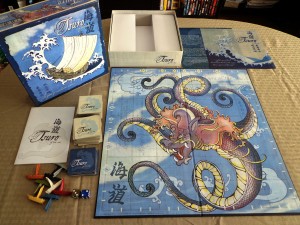
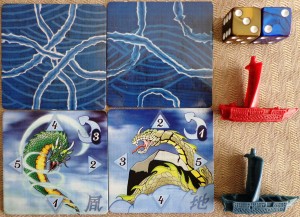
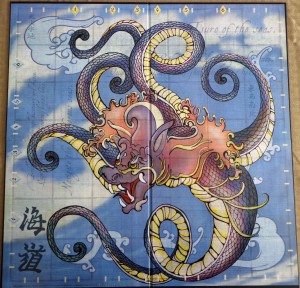
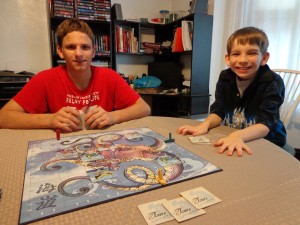
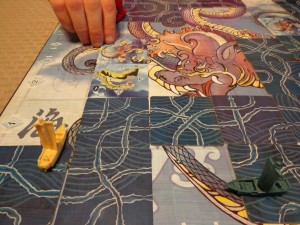
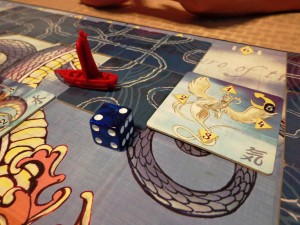
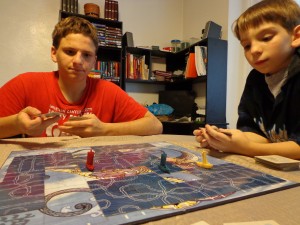
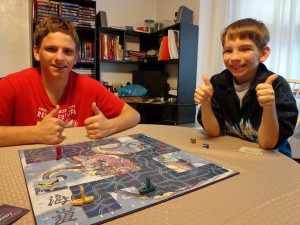
If I am buying one or the other for the family (teenage kids who play Catan, which of the two do you recommend?
Tsuro of the Seas has more play options, since you can play with or without the special tiles. The original Tsuro does fine on its own, but I’d recommend Tsuro of the Seas simply because it offers a bit more content. Though, if Tsuro is cheaper and you are tight on money, Tsuro is a fine choice. Keep in mind, that’s just my opinion! 🙂